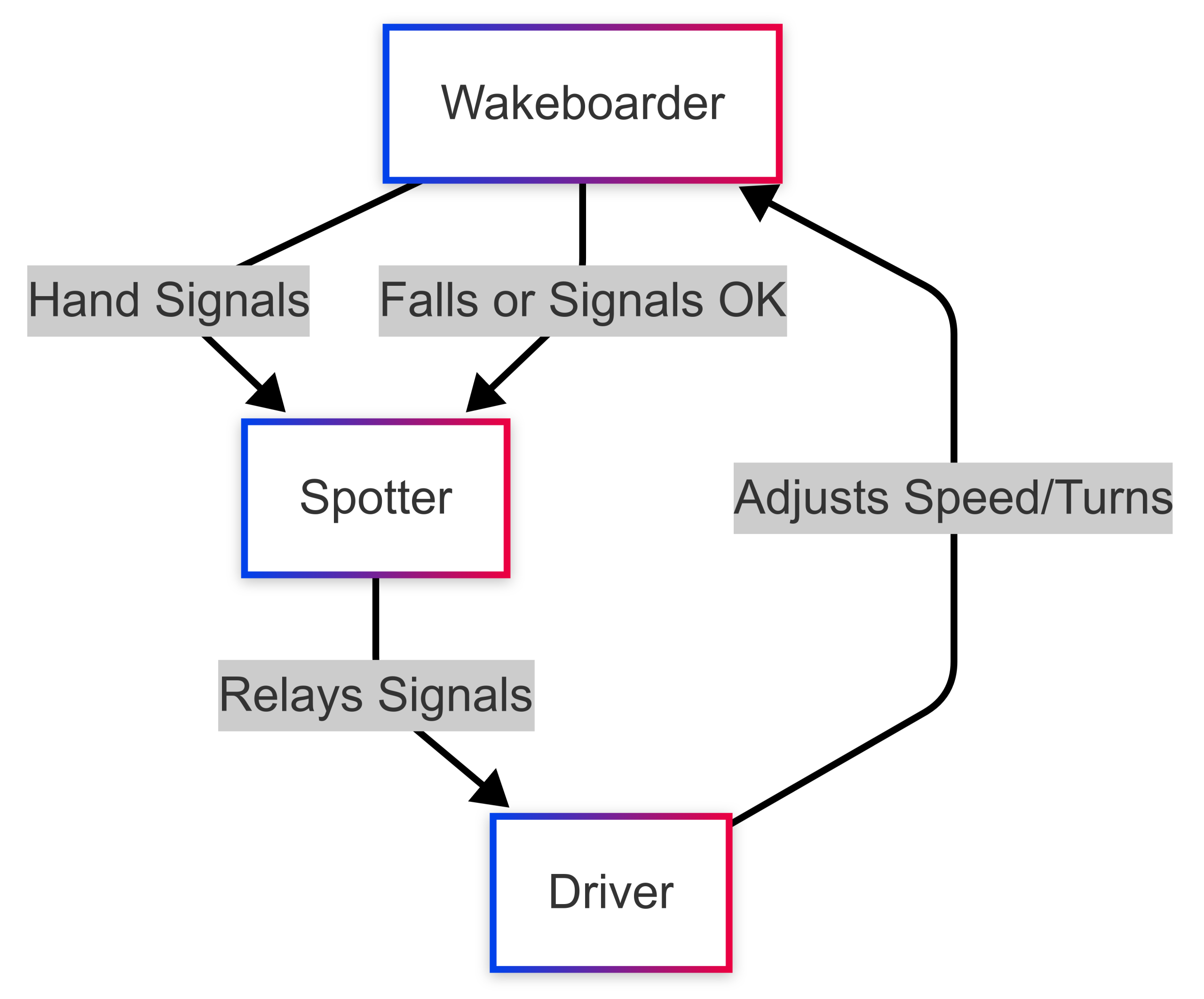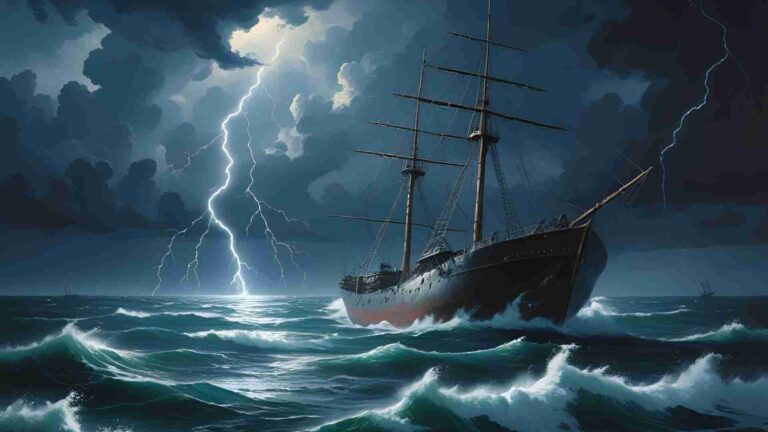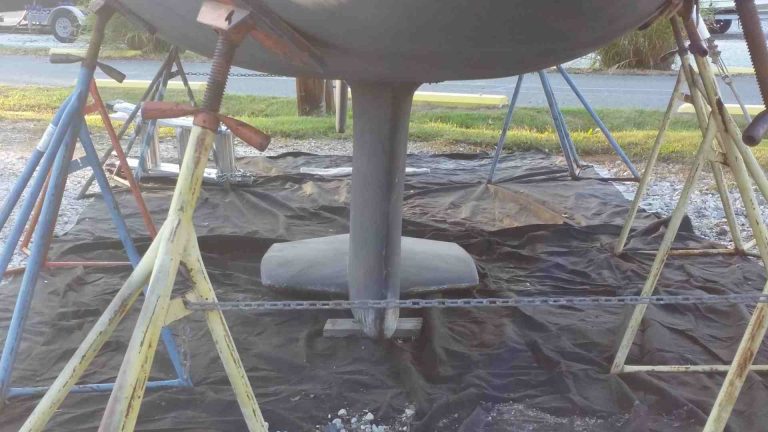Can Pontoon Boats Pull Wakeboarders?
Pontoon boats are celebrated for their versatility, offering a stable platform for cruising, fishing, socializing, and family outings. However, one question frequently arises among water sports enthusiasts: Can pontoon boats pull wakeboarders effectively? The short answer is yes, pontoon boats can pull wakeboarders, but their suitability depends on specific boat features, engine power, and the rider’s skill level. This comprehensive guide explores the feasibility of wakeboarding behind a pontoon boat, providing detailed insights into techniques, safety considerations, boat specifications, and modifications to optimize the experience. Whether you’re a beginner or an experienced rider, this article will help you understand how to make wakeboarding behind a pontoon boat both fun and safe.
Understanding Pontoon Boats and Wakeboarding
What Makes Pontoon Boats Unique?
Pontoon boats are characterized by their flat, stable design, supported by two or more pontoons (or tubes) that provide buoyancy. This design results in a spacious deck, making them ideal for group activities like cruising, fishing, and entertaining. A key feature of pontoon boats is their ability to generate a small wake, which is efficient for fuel consumption and minimizes disturbance in no-wake zones or near shorelines. This small wake reduces erosion and ensures a smoother ride for passengers, but it poses challenges for wakeboarding, a sport that thrives on larger, well-defined wakes for jumps and tricks.
Wakeboarding: The Basics
Wakeboarding is a dynamic water sport where a rider is towed behind a boat on a board, using the boat’s wake to perform jumps, spins, and other tricks. The sport requires a boat capable of producing a sizable wake and maintaining consistent speeds, typically between 20 and 25 miles per hour (mph). For beginners, smaller wakes are sufficient for learning to stand, balance, and cross the wake. Advanced riders, however, seek larger wakes to achieve greater airtime and perform complex maneuvers.
Can Pontoons Meet Wakeboarding Needs?
While pontoon boats are not purpose-built for wakeboarding like ski boats or wake boats, they can serve as a viable platform, especially for recreational wakeboarding. Their versatility allows them to support a range of water sports, including tubing, waterskiing, and wakeboarding, provided they have adequate horsepower and certain modifications. However, pontoons produce smaller, less-defined wakes compared to wake boats, which may limit the experience for competitive wakeboarders. For families and casual riders, pontoons offer a cost-effective and multifunctional option for enjoying wakeboarding alongside other activities.
Key Factors for Wakeboarding Behind a Pontoon Boat
To determine whether a pontoon boat is suitable for wakeboarding, several factors must be considered, including engine power, boat design, wake size, and safety features.
Horsepower and Speed
The engine’s horsepower (HP) is critical for pulling a wakeboarder. Wakeboarding typically requires speeds of 20–25 mph, with beginners needing slightly lower speeds (15–20 mph) and advanced riders preferring higher speeds for larger wakes. The following table outlines the relationship between horsepower, boat load, and water sport capabilities:
| Horsepower | Speed (mph) | Water Sports Capability | Notes |
|---|---|---|---|
| 70–90 HP | 15–20 | Tubing, basic waterskiing | Suitable for light loads; sluggish with many passengers. |
| 115 HP | 20–23 | Waterskiing, basic wakeboarding | Adequate for small groups; better for pulling riders out of the water. |
| 150 HP+ | 25–34 | Wakeboarding, advanced waterskiing, tubing | Ideal for consistent speeds and heavier loads; supports multiple riders. |
- 70–90 HP: Sufficient for tubing and light waterskiing but may struggle to pull wakeboarders, especially with a full boat.
- 115 HP: Capable of pulling wakeboarders at moderate speeds, suitable for beginners or small groups.
- 150 HP or Higher: Optimal for wakeboarding, providing enough power to maintain speed and pull riders regardless of passenger load.
The boat’s weight and passenger count also affect performance. A 20-foot pontoon with 90 HP may pull a wakeboarder effectively with two passengers but struggle with 12. Larger boats (22 feet or more) or tritoons (three pontoons) require higher horsepower to achieve the same results.
Boat Design and Performance Packages
Not all pontoon boats are created equal. Standard pontoons with basic hulls are designed for leisurely cruising, but those equipped with performance packages are better suited for water sports. Leading manufacturers like Bennington and Manitou offer performance packages that enhance speed, handling, and wake production. Two notable options include:
- Bennington Sport Performance Plus Package (SPS+): Designed for engines up to 200 HP, this package includes three 25-inch diameter pontoons, lifting strakes on the center pontoon, performance foils, solid round keels, an under-deck wave shield, and SeaStar hydraulic steering. It offers improved handling and wake production for water sports.
- Bennington Elliptical Sport Package (ESP): A premium package for high-horsepower applications (200 HP+), featuring two 25-inch outer pontoons, a 32-inch elliptical center pontoon with lifting strakes, performance foils, and power-assisted steering. This package rivals the performance of fiberglass sport boats, making it ideal for wakeboarding.
Tritoons, which have three pontoons instead of two, provide greater stability and lift, allowing for faster planing and larger wakes. Boats over 22 feet with performance packages are particularly effective for wakeboarding due to their enhanced water displacement and handling.
Wake Size and Modifications
Pontoon boats naturally produce smaller wakes, which are ideal for beginners but less exciting for advanced wakeboarders. To increase wake size, consider the following modifications:
- Weight Distribution: Shift passengers or gear to the stern to lower the boat’s rear, increasing wake height. For example, placing all passengers in the rearmost seats can create a larger wake.
- Ballast Bags: Add ballast bags filled with water to the rear of the pontoons to increase weight and wake size. Experiment with placement to achieve the desired wake shape.
- Speed Adjustment: Increase speed to 20–25 mph to enhance wake formation, but ensure the boat maintains control and stability.
While these modifications help, pontoon wakes will not match the size or shape of those produced by wake boats, which are designed with deep-V hulls and wake-shaping devices like tabs or ballast tanks.
Safety Features
Safety is paramount when wakeboarding behind a pontoon boat. Key features to ensure a safe experience include:
- Tow Point: Use a sturdy tow point or pylon at the transom to attach the wakeboard rope (65–85 feet long). Ensure the rope is in good condition to prevent snapping.
- Observer/Spotter: Most states require a spotter to monitor the wakeboarder and communicate with the driver. A wide rear-view mirror may also be necessary.
- Life Jackets: All riders must wear Coast Guard-approved life jackets.
- Boarding Ladder: A wide-step boarding ladder facilitates easy re-entry onto the boat.
- Bimini Cover: Provides shade and comfort for passengers during extended water sports sessions.
Techniques for Wakeboarding Behind a Pontoon Boat
Wakeboarding behind a pontoon boat requires specific techniques, especially for beginners. Below are step-by-step instructions for getting started, along with tips for drivers and spotters.
Getting Up on the Board
The most challenging part for new wakeboarders is getting up from the water. Follow these steps:
- Starting Position: Float in the water with knees bent toward your chest, facing the boat. Hold the tow rope with both hands, positioning it over the board, which should be directly in front of you.
- Board Positioning: Keep the board moving sideways through the water, with the forward edge slightly raised to prevent it from digging in.
- Signal to Go: Give the “speed up” signal (thumbs up) to the spotter. The driver should accelerate gradually to avoid jerking the rider.
- Rising from the Water: As the boat pulls, keep knees bent and allow the tow force to lift your body. Let the board pivot naturally so your dominant foot (usually the right for right-handed riders) rotates to the rear.
- Stance: Once standing, face across the board (not toward the boat), keeping knees and arms slightly bent for balance.
Riding and Turning
- Basic Riding: Maintain a relaxed posture with knees bent. Use slight body leans to steer the board.
- Crossing the Wake: Approach the wake at a shallow angle, keeping the board in contact with the water. Lean slightly to maintain control.
- Turning: Tip your toes down to move in the direction you’re facing or pull toes up to go the opposite way. Make turns gradual to avoid losing balance.
Jumping
Beginners should master riding and turning before attempting jumps. To jump:
- Approach the wake at a moderate angle.
- Bend knees as you hit the wake, then push upward to gain air.
- Land with knees bent to absorb the impact. The driver should slow slightly to reduce tension on the rope during landing.
Driver and Spotter Responsibilities
- Driver: Accelerate gradually during starts (12 mph for children, 15–20 mph for adults). Make wide, gentle turns to keep the rider in control. Slow down if the rider appears unstable or after a jump to ease landing.
- Spotter: Monitor the rider and relay hand signals to the driver. Common signals include:
- Speed Up: Thumbs up
- Slow Down: Thumbs down
- Maintain Speed: OK signal (thumb and index finger circle)
- Turn: Circle arm and point left/right
- Stop: Slashing motion across neck
- Back to Dock: Pat on head
- I’m Okay (after fall): Hands clasped over head
The following Mermaid chart illustrates the communication flow between the wakeboarder, spotter, and driver:

Safe Water Sports for Pontoon Boats
Pontoon boats, typically equipped with outboard motors, are safe for certain water sports but not others due to the proximity of the propeller. Below is a breakdown of safe and unsafe activities.
Safe Water Sports
- Tubing: Requires minimal speed (15–20 mph) and is safe for all ages. The rider is far from the propeller, typically 60–80 feet behind the boat.
- Waterskiing: Suitable for beginners and experts, provided the boat has sufficient horsepower (90 HP+). Skiers maintain a safe distance via a long rope.
- Wakeboarding: Safe with a 65–85-foot rope, keeping riders clear of the propeller. Best with 115 HP+ for consistent pulling power.
- Long-Line Foiling: Wake foiling with a long rope (similar to wakeboarding) is safe and gaining popularity. Requires precise speed control (15–20 mph).
Unsafe Water Sports
- Wake Surfing: Highly dangerous behind pontoons with outboard motors. Riders are too close to the propeller (within 20–30 feet), risking severe injury. Wake surfing requires inboard or V-drive boats designed for the sport.
- Short-Line Foiling: Foiling with a short rope (similar to wake surfing) is unsafe for the same reason, as it positions the rider near the propeller.
Safety First
Always prioritize safety:
- Verify the water sport is safe for a pontoon boat.
- Check local boating regulations, which may require a spotter, mirror, or specific speed limits.
- Ensure all riders wear life jackets and use well-maintained equipment.
- Avoid exceeding speed limits, especially with young or inexperienced riders.
Optimizing Your Pontoon for Wakeboarding
To maximize your pontoon’s wakeboarding potential, consider the following upgrades and specifications.
Recommended Pontoon Specifications
| Feature | Recommendation |
|---|---|
| Length | 22 feet or longer for better wake production and stability. |
| Pontoon Type | Tritoon for enhanced lift and handling. |
| Horsepower | 150 HP+ for consistent wakeboarding performance. |
| Performance Package | Bennington SPS+ or ESP, or equivalent (e.g., Manitou X-Plode or Legacy packages). |
| Steering | Power-assisted hydraulic steering for precise control. |
| Tow Point | Reinforced tow pylon or transom tow point. |
| Storage | Ample storage for wakeboards, ropes, and life jackets. |
| Boarding Ladder | Wide-step ladder for easy re-entry. |
| Bimini Cover | Provides shade for comfort during long sessions. |
Price Considerations
Pontoon boat prices vary based on size, features, and engine power. Below are approximate price ranges for pontoons suitable for wakeboarding:
- Entry-Level (70–90 HP, 20–22 feet): $25,000–$40,000. Suitable for tubing and basic wakeboarding but limited for advanced riders.
- Mid-Range (115–150 HP, 22–24 feet, SPS+ Package): $40,000–$60,000. Ideal for recreational wakeboarding and waterskiing.
- High-End (200 HP+, 24–26 feet, ESP Package): $60,000–$100,000+. Comparable to sport boats, with excellent wakeboarding capabilities.
In contrast, dedicated wake boats can cost $50,000–$150,000, making pontoons a cost-effective alternative for families seeking versatility.
Modifications for Better Wakes
- Wakeboard Tower: Install a wakeboard tower to elevate the tow point, improving rope angle and wakeboarder control. Prices range from $1,000–$3,000.
- Ballast System: Use portable ballast bags ($100–$300) or integrated ballast tanks (if available) to increase wake size.
- Propeller Upgrade: A high-performance propeller optimized for towing can improve acceleration and speed. Consult a dealer for compatibility (cost: $500–$1,000).
Pontoon Boats vs. Wake Boats for Wakeboarding
While pontoons are versatile, they differ from wake boats in several ways:
| Feature | Pontoon Boat | Wake Boat |
|---|---|---|
| Wake Size | Smaller, less defined; modifiable with weight | Large, well-shaped; adjustable with tabs |
| Maneuverability | Wide turns, slower response | Sharp turns, highly responsive |
| Horsepower Needs | 115–200 HP for wakeboarding | 300–400 HP for optimal performance |
| Passenger Capacity | High (10–16 people) | Moderate (8–12 people) |
| Versatility | Cruising, fishing, socializing, water sports | Primarily water sports |
| Cost | $25,000–$100,000 | $50,000–$150,000 |
For casual wakeboarding, pontoons are sufficient and offer additional activities. Competitive wakeboarders should opt for wake boats due to their superior wake control and maneuverability.
Popular Pontoon Models for Wakeboarding
Several pontoon models are well-suited for wakeboarding due to their performance packages and high-horsepower options:
- Bennington R Series (23–27 feet, 150–350 HP): Features SPS+ or ESP packages, ideal for water sports. Starting price: ~$60,000.
- Manitou X-Plode (24–26 feet, 150–300 HP): Designed for performance with tritoon hulls and hydraulic steering. Starting price: ~$65,000.
- Harris Crowne SL 270 (27 feet, 200–400 HP): Luxury tritoon with advanced towing capabilities. Starting price: ~$80,000.
These models combine versatility with the power and handling needed for wakeboarding.
Conclusion
Pontoon boats can indeed pull wakeboarders, making them a fantastic option for families and recreational enthusiasts looking to enjoy water sports without the high cost of a dedicated wake boat. With the right horsepower (150 HP+), performance packages (e.g., Bennington SPS+ or ESP), and modifications like ballast bags or wakeboard towers, pontoons can produce adequate wakes for beginners and intermediate riders. While they may not match the wake size or maneuverability of wake boats, their versatility, affordability, and capacity for multiple activities make them a compelling choice.
To ensure a safe and enjoyable wakeboarding experience, prioritize proper equipment, adhere to safety regulations, and master the techniques outlined in this guide. Whether you’re teaching a child to wakeboard or enjoying a day on the water with friends, a well-equipped pontoon boat can deliver endless fun and memories. For those ready to hit the water, visit a reputable dealer to explore pontoon models designed for water sports and start planning your next adventure.
Happy Boating!
Share Can Pontoon Boats Pull Wakeboarders? with your friends and leave a comment below with your thoughts.
Read Can You Tube Behind a Pontoon Boat? until we meet in the next article.






